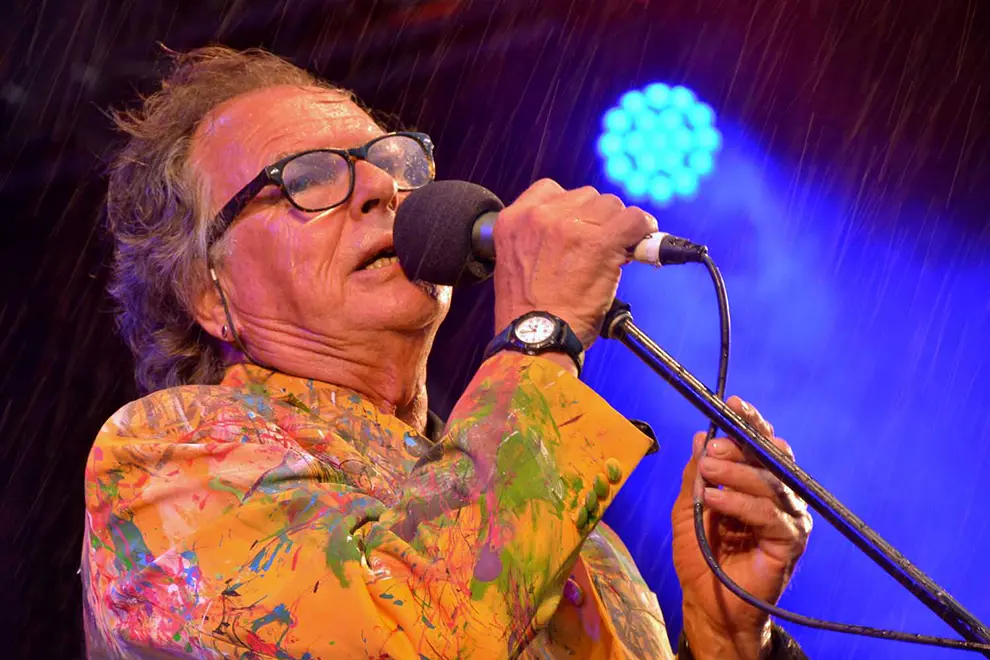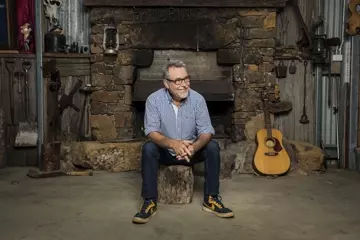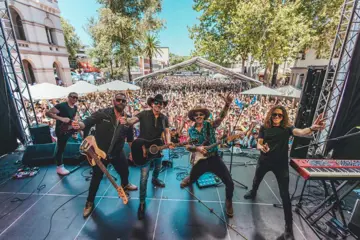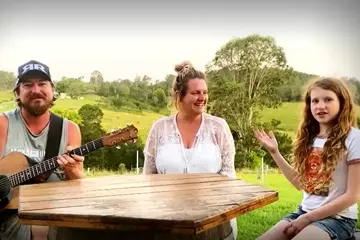A landmark report from the Country Music Association Of Australia (CMAA) has found that Australia’s country music sector has grown so much that in the 2024/25 financial year, it generated revenue of $1.09 billion and has a live audience of 3.2 million.
According to Valuing Australian Country Music 2025, published on July 31st, the billion dollar figure marks a 77% jump from the $619 million value from its last census in 2019.
“Before that, it took 20 years from 1997-2018 for the revenue to double,” CMAA Chair Dobe Newton tells Countrytown.
“This is a spectacular figure for something that was considered for so long to be a minor genre.”
Newton led this project with a team of researchers from JMC Academy and Collarts. He also did the 2019 census and a decade of Victorian Live Music Census projects.
12 Takeaways
Australia Remains Third Largest In World
While country music is experiencing a global boom, Australia remains the world’s third largest and fastest growing country music market.
This is according to Spotify, which reported that since 2023, country music streams have increased by 115%. Australia recorded the world’s highest percentage (74%) of new country listeners.
The report relates: “Australia ranks second in the world for listeners under 25 streaming country. 92% of them are in metro areas.
“Gen Z led the charge with the world’s second highest streaming rate at 22% of subscribers.
Taking It To The World
In terms of songwriting and recording, Australia ranks among the world’s leading exporters of country music.
Revenue From Gigs
Revenue from live performances was $560 million, representing 51% of the industry’s total and a 93% increase from 2019. These shows created 2,086 Full Time Equivalent jobs.
Festivals Reach 684k Fans
The report identifies 137 dedicated country music festivals with 684,000 patrons. It also counts 121 electronic dance festivals and 112 rock tribal gatherings.
Major country music festivals in 2024 generated $54.5 million in ticket revenue. This was a 124% jump on the $24.3 million in 2019.
Most (52%) of country festivals took place in inner-regional locations. There were 31% of them in outer-regions and 4% in remote locations. The remaining 15% staged in inner and outer metro places.
The report goes on to say: “Although we do not have sufficient details to accurately report the revenue, we note that local councils estimate that these major festivals annually inject $140 million+ into local and regional businesses.”
Bookings Up 4.5 Fold
The number of country shows booked in Australia in 2024/25 increased 4.5-fold, said promoter Live Nation.
The 49 major concerts attracted 490,000 fans. They included US superstar Luke Combs’ six sold-out stadium shows in Brisbane, Sydney and Melbourne.
It marked the first country act to play a stadium tour. The CMAA estimated attendance at 250,000. A future Pollstar listing put the figure at 349,075 and grossing US$48.9 million.
Also doing well was Chris Stapleton’s arena run which drew over 100,000.
Working For The Dollar Pt. 1
Excluding performers and utilising the current award hourly rate of $1.15 for a hospitality worker, Valuing Australian Country Music 2025 conservatively suggests these performances generated $109.1 million for industry workers.
Working For The Dollar Pt. 2
According to the report: “In 2024/2025, country music festivals employed 15,000 personnel, creating 534 FTE (Full Time Equivalent) jobs.
Concerts created 540 FTEs while performances in small venues created 1,012.
This is an increase of 42% on the $76.9 million recorded in 2019.
Small Venues Struggling
While all sectors in country music see growth, a low point is small venues struggling to survive.
There were 16,000 country music gigs at 542 small venues drawing 1.87 million patrons.
Box office revenue declined by 16% to $23 million. But patron spending at these shows increased by 93% on the $88 million reported in 2019.
Recorded Music Earns Almost $90m
Recorded music revenue was $89.7 million, including $25.7 million in direct-to-fan sales – a 37% increase on 2019.
Between 2000 and 2016, Australian and New Zealand acts accounted for an average of 16% of songs on the annual Top 100 singles chart.
That average fell to 10% between 2017 and 2022, and dipped to 2.5% in 2023.
Rise In Media Consumption
There’s obviously a growing interest in fans reading about – and listening to – country music.
The CMAA reported that in 2024, Countrytown recorded a 91% year-on-year increase in website visitors.
Radio airplay saw an increase in country music but that did not extend to local artists.
Total plays rose by 27% to 147,100 in 12 months. There were 13 songs by local acts but none reached a Top 10 dominated by Americans.
The highest position of #12 was by the band Darlinghurst.
More Country Writers
Those APRA members who identify themselves as country writers rose to 16%, up from 11% in 2019.
Melbourne continues to be Australia’s country writing ‘capital’. The cities of Merri-Bek (formerly Moreland), Darebin, and Yarra account for a massive 56% of APRA writer members living there.
In NSW, the writers are divided between regional and metro, while Queensland writers are mostly in the bush.
Songwriting and publishing revenue was $75.2 million, up 33% from 2019.
Taking Out The Wins
Graduates from the CMAA’s Academy of Country Music programs won 42% of the Golden Guitars awarded between 2014 and 2024, supplied 75% of the Star Maker Top Ten since 2014 and been awarded the title on 18 of the last 24 occasions.
The Future
The far-better-than-expected results of Valuing Australian Country Music 2025 are tipped to bring many major changes to the local sector.
20 years ago, the sector was estimated to have a 5% to 8% market share.
Nowadays it’s estimated to be 10 –11%. “That’s a very healthy figure,” says Newton.
Based on the Victorian Music Development Office’s 2022 estimates, that’s bigger than Top 40 (10%) and hip hop (7%), and nipping at the heels of rock and indie rock (13%).
Pop leads with a 20% share.
That the sector has now grown to be a significant sector, you can expect more funding from various levels of government, and music industry association, to provide more help for established and emerging names in regards to gigs, writing workshops, touring opportunities and overseas trips.
There’ll be more cultural exchanges between Tamworth and Nashville.
Australia, already a terrific tour destination, will attract more overseas acts to play here.
This will in turn provide more exposure and jobs for the sector. More big name tours will be a boon for fans, of course.
But governments and the industry will have to realise that this makes it even harder for small venues to survive, much less exist.
Says Newton, “I hope this report reinforces how small venues are struggling. Their box office is really down. People are going to gigs, they are still spending their money. But the venues survive on box office to a certain extent.
“In order to get people to come back to gigs in the numbers pre-pandemic, they’ve had to put on more free shows. It’s great that major country concerts are generating such revenue. But how much disposable income is left for punters to actually go to local shows?”
The next CMAA report also intends to look at brands and businesses that have grown up around the boom – including country style clothes, eateries and bars.















